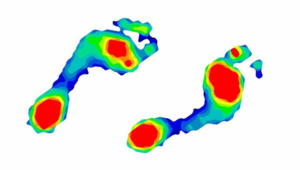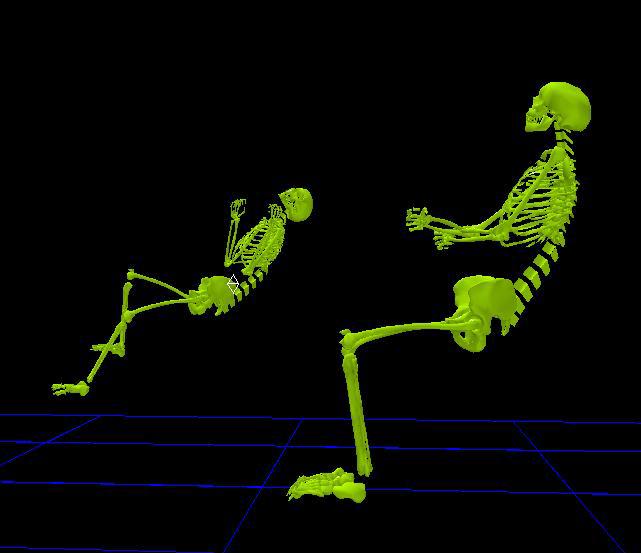Product and equipment testing
Testing sports footwear, saddle wheelchairs and modified shovels.
Sports footwear testing

Using motion capture and insole pressure mapping to analyse the performance of sports footwear. The aim of this project was to compare the plantar pressure distribution and the ankle movement during running and dribbling a football. Insole plantar pressure distribution was recorded using a Tekscan system and 3D motion capture was simultaneously recorded.
Data from these two systems was used to analyse the distribution of pressure between the foot and shoe insole and to look at the kinematics of the ankle joint as the players ran and dribbled a football through the laboratory, allowing researchers to compare different shoe models and make recommendations for how the footwear might be improved, specifically what cushioning and support is required for different activities.
Analysis of posture and interface pressure in using a "saddle" wheelchair design

The aim of this project was to provide an assessment of a saddle wheelchair design to enable funding for continued development. 3D motion capture was used to examine the posture of the chair user and pressure measurements to assess the saddle design for interface pressure. Comparisons were made with a conventional wheelchair.
A decrease in pelvic rotation from 49 to 18 degrees was measured, and twisting of the pelvis was also reduced from that observed in a conventional wheelchair. The saddlewheel chair design also improved support for the head and neck, and the improved posture reduced involuntary contractions in the arms.
Increased interface pressure was measured on the saddlewheel chair design, with more pressure being measured on the seat of the chair than the back support (compared to a conventional wheelchair), however no pressure 'hotspots' were identified.
Biomechanical assessment of a modified shovel design.
The aim of this project was to assess the biomechanics of an operative using the modified shovel compared to a conventional design. The modified design uses an additional handle intended to improve posture during lifting and shovelling.
3D motion capture was used to analyse the routine task of shovelling from ground level to load a wheelbarrow; a range of loads were assessed.
Kinematic analysis showed that using the modified design reduced back flexion by around 20%.
Biomechanics of a Shovel design